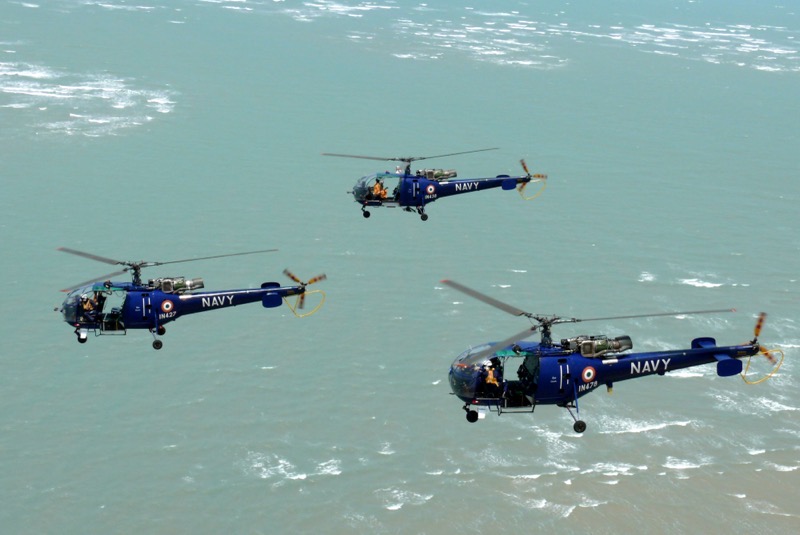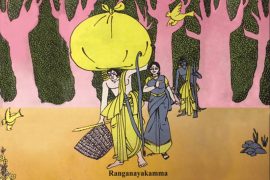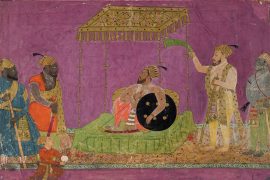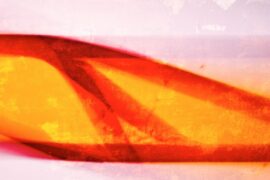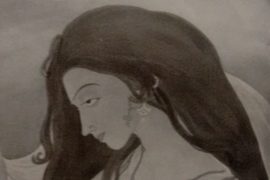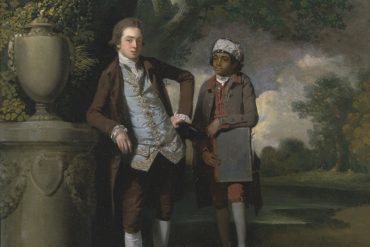In 1969, the Indian Air Force (IAF) added a modified French Alouette III licenced by Hindustan Aeronautics Limited (HAL). The light utility helicopter, named ‘Chetak’ after Maharana Pratap’s fabled horse, became a prized possession of the IAF, which has been utilised for over five decades.
However, sometime in the 1970s, Chetak rose to fame after a Republic Day parade at the Rajpath. As is customary during Republic celebrations, the President of India was given a spectacular show of military power.
Tanks roared past while trucks transported artists doing a variety of spectacular feats. Soldiers marched along the boulevard, displaying the best military weaponry. There were few shocks until an unexpected visitor showed up.
A flying elephant appeared, rhythmically jiggling. It blew away the spectators at the parade. The dancing jumbo hovered for a few minutes at approximately 910 feet before ascending over the India Gate and vanishing into the clear sky. A Chetak helicopter disguised itself as a flying elephant.
The late Group Captain Birji Mohan Dutta is said to have piloted the flying and dancing Chetak disguised as an elephant. Dutta was the commander of IAF Helicopter Unit 116.
“On approaching Rajpath, the helicopter would swoop down to an altitude of 910 feet in front of the dais, enthral the audience for about 5-7 minutes with its little jig, and would gain height to clear India Gate and fly back to Palam air force station,” Ravi Dutta, the wife of late Captain, recalled the scene on the phone with Times of India(TOI).
A local tailor from New Delhi arrived at the Air Force base a month before the event to finalise the details. The adept tailor finished the detailed work in just two or three weeks.
The chopper was draped entirely in colourful fabrics. Its trunk, legs, and body were painstakingly sewn together. The helicopter garment fashioned delicate applique work and decals. The New Delhi-based tailor even gave it tusks, eyes, toes, and other details.
The tail beam of the flying Chetak only covered part of the chopper. The body of the helicopter had panels with minimal parts of the cabin exposed through slits for the pilot to see. The entire design, with its details, seemed very realistic.
The undertaking of flying the elephant required complete focus and control over the helicopter; the risk could prove deadly. The fabric could come off, get caught in the blades, and lead to a disaster. Making it fly, let alone dancing, was an exemplary display of Dutta’s skills as the head of Unit 116. The helicopter maintained a steady speed of 40-45 knots, never exceeding 60 knots.
After Dutta’s showcase on Republic Day, Chetak was involved in a few more similar acts. More flying elephants were spotted in pictures that resurfaced over the years. Chetak was also decorated like a fish in Goa.
The national bird of Mauritius, the extinct Dodo, appeared in the sky on Mauritius Independence Day in 1993. Again, it was a Chetak dressed in a fancy costume. The Mauritius Force had acquired Chetaks from India.
Chetak helicopters have been utilised in many security and civilian missions. HAL built over 300 Chetaks to supply IAF. These shows brought Chetak into the limelight in India. While Chetak was an impressive machine at its delivery time, its technology is outdated and calls for urgent change.
Over forty years later, in the 2010s, the IAF considered changing them. However, the commissioned replacements have been delayed for a long time now. The TOI reported that the end of Chetak helicopters’ “total technical life” will begin.
The IAF has been seeking replacements for the light chopper for more than 15 years. During the military skirmish with China a few years ago, Chetaks flew at high altitudes of Siachen Glacier. However, the antiquated technology posed a high accident rate and significant serviceability issues.
“The defence ministry has been told that a critical operational void is fast emerging due to the vintage single-engine Cheetah and Chetak fleets. The bulk of them are over 40 years old,” reported a senior officer in 2020.
The three wings of the military possess one hundred and eighty-seven Chetak helicopters and two hundred and five Cheetah helicopters. Four hundred eighty-three updated light utility helicopters are needed to replace the outdated technology, but the three-pronged strategy to acquire them is dormant.
An India-Russia joint venture was agreed upon in 2015. The project was meant to provide two hundred twin-engine Kamov-226T worth Rs. 20,000 crore. However, the contract is stuck in the technical evaluation stage.
Hindustan Aeronautics Limited (HAL) also developed light utility helicopters, which received initial operational clearance (IOC). HAL has promised to supply 172 replacement helicopters.
The last project is a strategic partnership between a private national company and a foreign manufacturer to supply 111 twin-engine naval utility armed choppers with a budget of 21,000 crores. However, the initiative is still in its early stages.
The Chetak helicopters have ingrained their mark in India’s military history and people’s hearts. Helicopters are crucial to military missions, and their security directly reflects the security of our soldiers.
Chetak was named after Maharana’s horse, symbolising devotion, bravery, and resistance to occupation. The helicopters have served the country well.
-30-
Copyright©Madras Courier, All Rights Reserved. You may share using our article tools. Please don't cut articles from madrascourier.com and redistribute by email, post to the web, mobile phone or social media.Please send in your feed back and comments to [email protected]

